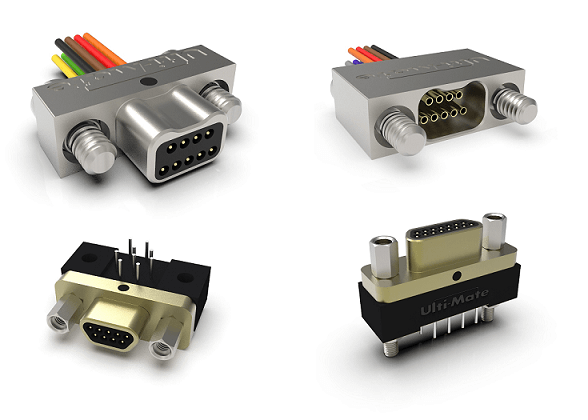Many times, busy engineers postpone connector and cable decisions until the last design steps. During the last phase, attention turns to how best to interface the balance of the circuits and additional boards and equipment included in the new design. The result often leaves the designer with little or no board space to place the necessary connector(s). Understandably, design teams are more concerned with seemingly more important elements of their projects, like processing, imaging, motion, etc., commonly neglecting the more mundane process of connecting board to board, or getting signals to and from their devices, yet every link in the chain is as critical as the next. Longer lead times need to be considered, and choosing an inadequate interconnect system that fails will knock out a system just as fast as a failed circuit, sensor or processor.
Factors that also must be considered in connector design include current carrying capacity, voltage requirements, temperature ratings, available board space, and environmental concerns. Design durability must also be considered: How many times will the connector pair be mated/unmated? Who will be handling/processing the connector? For example, will the users be lab technicians, military personnel or oil exploration workers? Handling conditions vary widely.
New applications in diverse fields, such as unmanned aerial vehicles, munitions applications, robotics, and medical electronics require miniature yet very reliable, rugged and durable connector systems, this means the choice of specific connector types are more crucial than ever.
New applications in defense, space, medicine, and heavy industries such as oil and gas exploration, are driving the need for high density connectors that are capable of withstanding the harshest shock, vibration and temperature conditions.
Many ask if other commercial high-density connectors that are similar in size and appearance, commonly used in small portable electronics, too delicate to survive the demanding environments? The answer in most harsh environments is yes.
Some basic physics provide a surprising and yet logical explanation of the durability and reliability of Micro and Nano miniature connectors. According to Newton’s second law of motion: Force = Mass x Acceleration.
Therefore, a lighter, lower mass connector will withstand greater acceleration (in this case, shock) than heavier interconnect if both are given equal force and good design.
Micro size connectors defined by MIL-DTL-83513 on a .050” pitch are 4 x smaller than a MIL-C 24308 D Subminiature on a .100” pitch. A Nano connector as defined by MIL-DTL-32139, are 4 x smaller than a Micro connector. The pitch of a Nano connector is only .025”, which means it is only a quarter the size and has 80% less mass than the MIL-DTL-83513 Micro D.
The performance of Micro and Nano miniature connectors under extreme conditions is largely dependent its contact design. Many designs have been put forward, including twist Pins, Solid Pins, Stamped Pins and formed Compliant Pins, all of which comply with the Mil Spec performance requirements. In spite of the design variances, all of these can deliver a reliable solution, albeit some better than others under certain circumstances.
For further information on the advantages of stamped and formed Nano contacts, please visit: THE WINCHESTER INTERCONNECT MICRO STAMPED AND FORMED CONTACT
Now let’s look at the shock and vibration performance. Micro D and Nano D specifications are both rated at 1 microsecond max discontinuity for shock and vibration. These minor discontinuities will not affect performance, including electronic equipment that is increasingly reliant on LVDS (low-voltage digital signal) technology, whereas even a small discontinuity can mean that a signal is lost. Use of a Mil Spec style stamped and formed compliant pin, (versus other contact designs), will not suffer higher discontinuities commonly experienced with commercial connectors.
As the demand for smaller, more reliable and lighter weight electronic equipment for demanding applications grows, there simply isn’t room for the tried and true but bulky and heavy MIL-STD 38999 circular connectors. For similar reasons, traditional rectangular D-Subminiature (MIL-C-24308) configurations are no longer suitable because of their size and weight. High density Micro and Nano connectors are designed to meet these critical design requirements. Winchester Interconnect Micro’s stamped and formed Micro and Nano Mil Spec style contacts are available in a variety of connector formats. Examples include single and two-row strips, latched micro connectors and. Micro and Nano circular designs, both standard and custom, . All of which can be supplied in complete cable harness configurations based on the customer’s requirements. For more information, visit our website
